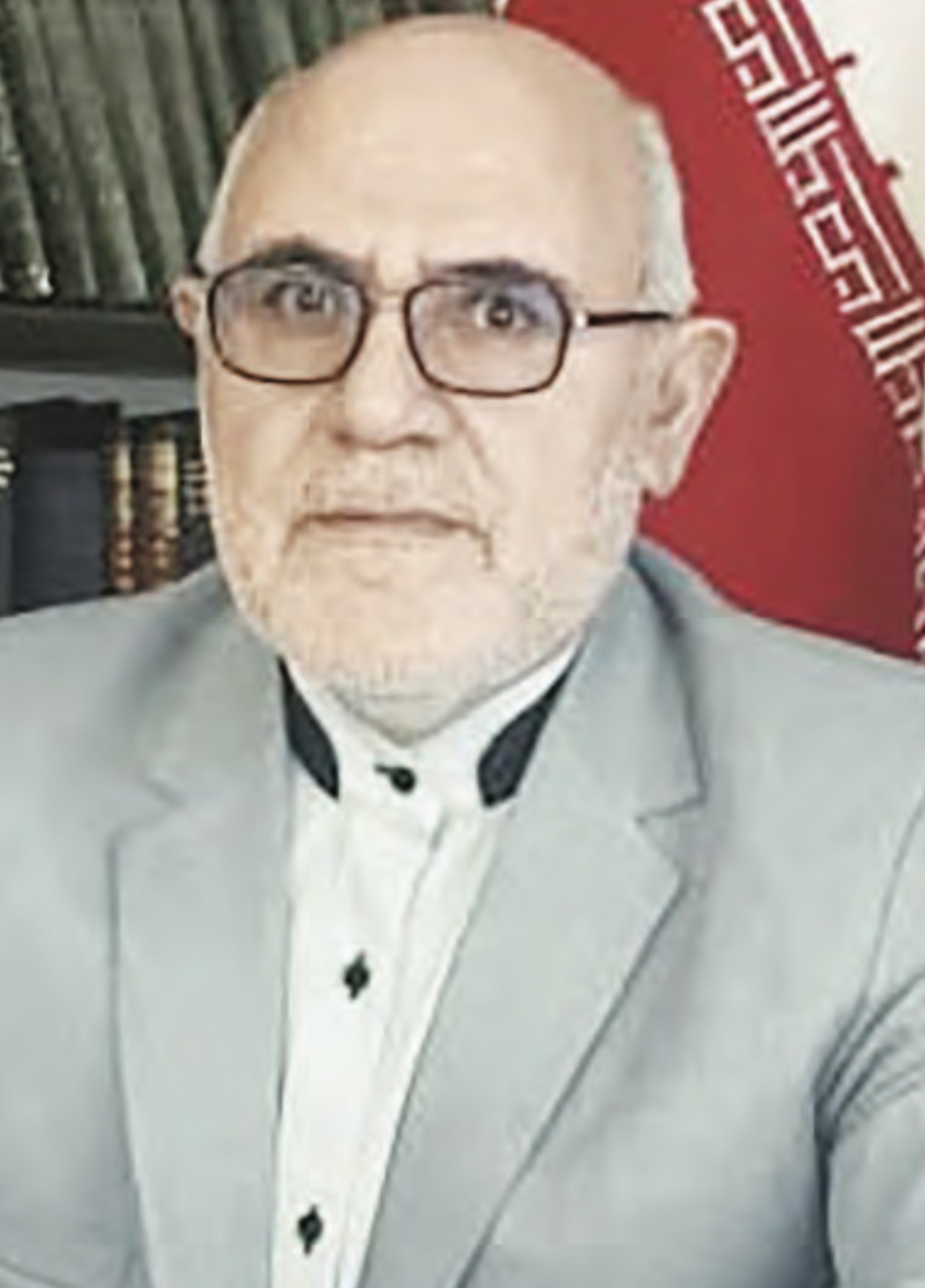Sir, as you celebrate the 45 years of Iranian revolution, what can you say about the struggle before achieving your goals?
The Islamic Republic of Iran has been able to achieve great progress with the help of God and relying on local knowledge and the power of its people. Establishing a government based on religious democracy and giving life to the spirit of anti-arrogance and decolonization in the region has made Iran a leading country and a thinker against oppressive countries. Despite all the problems and obstacles created by these countries and neo-fascist regimes, Iran has proudly celebrated the forty-fifth anniversary of the Islamic Revolution.
Let me briefly refer to Iran’s achievements in various fields of human endeavours, especially in the field of international and regional science and knowledge. However, it is clear that Iran’s progress in other fields such as military, economic, political and social is not hidden from anyone and it will definitely be mentioned in other opportunities.
How would you judge Iran’s growth in science and technologically globally?
Iran is at the height of the growth of world science. Iran’s ranks first in the Islamic world in presenting the best articles. Iran’s 31% growth in presenting the best articles made Iran take the first place in the Islamic world in presenting the best scientific articles. First rank in Asia and fifth in the world in laser knowledge. Laser, as one of the 10 key technologies in the world, is a tool that emits light in the form of parallel beams with a certain wavelength. Laser light can pierce the hardest metals or easily pass through a hard object like diamond and create a hole in it.
This knowledge has many applications in many fields, including the medical industry, telecommunications, military, laboratory agriculture and research. Although this technology is very complex, despite the cruel sanctions, the Islamic Republic has managed to rank first in Asia and fifth in the world after the United States, France, Germany and Russia in laser knowledge.
How do you rate the country in the transformation?
Yes, Iran is the second country with the knowledge of making neural prostheses. The made neural prostheses is a microelectronic system with a microprocessor chip that works based on the mechanism of the human brain in creating and controlling movement and is unique in its kind in the world.
The most important feature of the neural prosthesis is that it allows movement in the paralyzed limb in a natural way, creates the same way as the human central nervous system creates movement in a limb, after 20 years of continuous research, Iranian researchers succeeded in making a neural prosthesis for standing and walking people with spinal cord injury called Parawalk, and the monopoly of the United States. They broke the existence of this knowledge and technology and Iran ran as the first country Bioimplant generator. An implant is a medical device that has a biological origin, and the use of tissue engineering is changed in such a way that it is absorbed by the body when it reaches the appropriate level and is used to repair the damaged parts of the case be used.
Their performance is similar to stem cells, which are used in the treatment of various diseases and conditions such as wounds, corneal transplants, corneal inflammation, eye herpes, chemical cataracts, and cataract and glaucoma surgery. Igah Iran in the production of this product is the first country in the world to produce bio-implant knowledge in the building world and the first country to produce bio-implant in the world.
The fourth country with stone paper formulatio models of these robots is surgeon robots. The science of making medical robots is a collection of several sciences that include software engineering and artificial intelligence in medical engineering. Surgery is mechanical engineering and electrical engineering.
How was Iran able to break the US Monopoly?
The Islamic Republic of Iran was able to break the monopoly of the United States and become the second country in the world to produce this type of robot. Iran is the fifth country with the technology to manufacture STM vegetative tunnel microscopes. The project of making STM vegetative tunnel microscopes started in 2013 and after the success in making its prototype, the construction of 5 microscopes started with the support of the Special Headquarters for the Development of Nanotechnology, and after 3 years of efforts, on Saturday 2/29/2016, from the first domestically made STM device was unveiled under the brand name Nama.
The imaging power of this microscope is from one nanometer to 8 microns, which is unique in this sense. All stages of designing, manufacturing and localizing the technology of this microscope were carried out by the researchers of the Medical Science and Technology Research Center of Tehran University of Medical Sciences. Stm tunneling microscopes are one of the most advanced equipments used in nanotechnology research. Five countries with the technology to make stm vegetative tunnel microscopes joined Iran’s amazing nuclear achievements.
In 2007, Tehran’s research reactor, which was only used for research and medicine and produced medicinal isotopes, faced a fuel shortage crisis, and Argentina, which had been responsible for supplying fuel to the reactor until now, was in breach of contract with the intervention of the United States.
There was also this issue of shutting down the Tehran rector, what is your take on it?
Shutting down the central core of the Tehran reactor due to the lack of fuel and stopping the provision of radiopharmaceuticals for certain patients and creating a crisis in the country caused the authorities to think of supplying 20% of the reactor fuel inside the country, so by making preparations for it at the Fardo site in Qom, On 11/18/2018, the then president issued an order to produce 20% fuel, and in September 2019, Iran announced that it had succeeded in producing 25 kilograms of 20% uranium in Natanz, and thus Iran also joined the nuclear club of the world. Advantages of self-sufficiency in fuel production 20%. Iran’s lack of need for western countries to supply fuel to Tehran’s important power plant, earning money through the sale of 20% fuel based on NPT powers. Enrichment experience at a higher level 4 increasing the nuclear escape capability with 20% uranium. The eighth satellite launcher, the path of the first satellite-borne rocket began in 1374 and its localization was completed in the next 10 years.
The satellite-borne carrier was launched into space on 11/15/1386 in its first mission. In the next stage, Vashk launched Safir 2- Iran’s first satellite named Omid on 11/27/2007 and successfully put it into orbit. Continuing the missions of this satellite carrier, on 3/25/1390, Safir 3 rocket successfully launched Iran’s first imaging probe named Rasda and put it into orbit. It is not the first satellite rocket manufactured by Iran’s aerospace industry, and 10,000 parts have been used in its various components, including the engine, body, guidance, and control. Iran is the eighth country after Russia, America, Japan, China, England, and India. The world is in the process of launching rockets into space.
What is your take on Iran’s dams building efforts?
Yes, it is widely known that Iran is the third country in the dam building industry. Due to being in a semi-arid climate, Iran has always faced the problem of water shortage, and for this reason, the dam building industry has always been in the center of attention. Before the Islamic Revolution, 19 reservoir dams with a reservoir volume of 13 billion cubic meters (equivalent to 25% and an annual adjustable water reservoir volume of 13 billion cubic meters (equivalent to 25% and an annual adjustable water capacity of 14 billion cubic meters) were operated in the country with the help of foreign engineers.
After the Islamic Revolution, relying on the power of domestic engineers, there were 165 reservoir dams. With a total volume of about 51 billion cubic meters (equivalent to 75%) and an adjustable water capacity of 37 billion cubic meters, it was put into operation, which, in addition to being self-sufficient in this industry, made Iran the third largest dam-building country in the world and an exporter of dam-building services to more than Out of 20 countries in the world, China and Turkey are in the first and second places in the world. Iran’s indigenous destroyers are the most advanced in the Middle East. Sahand frigate is the third warship built by Iran after Jamaran and Damavand (or) Velayat. This warship is reminiscent of the Alvand-class Sahand frigate.
It sank in 67 and was called Sahand. This frigate is the most advanced indigenous frigate in the Middle East, and its offensive and defensive capabilities are about twice that of the Jamaran, and this difference can be seen in the updating of torpedo launchers and types of anti-aircraft and anti-surface cannons, surface-to-surface and surface-to-air missile systems, and anti-aircraft defense systems. The submarine’s ability to evade radar, increase its operational range, and its high maneuverability, as well as electronic systems, should be searched for. Native fighters of Iran
Kausar fighter after Azerakhsh Saega 1 and 2 fighters, the fourth fighter it is produced in Iran. The most important features of the all-Iranian fighter Kausar Using an advanced and avionic fabric architecture, Fire surveillance using military digital data network compatible with generation, Utilizing computerized ballistic weapon calculations and advanced marking system HUD in order to increase the accuracy of hitting weapons and ammunition, Using advanced and multi-purpose fire inspection radar to increase accuracy, Discover targets and threats, using accurate and independent radio navigation 6 Using smart moving map system. Building a revolutionary submarine in the marine industry.
With the arrival of Russian submarines in the 70s and at the same time as the defects of these submarines were discovered, it became necessary, the mastery of their technology was felt by the country’s experts, so the efforts for Research on the technology of submarine construction in different categories according to the local needs began. After about a decade of ‘Ghadir’ underwater scientific studies, which is one of the first important results of this effort, it was in the light class and was given to Nadaja. This submarine suits the climatic conditions.
The Persian Gulf and the Sea of Oman have been designed and built. After this, we should mention the medium-class Fateh submarines, which are more tactical than the Ghadir generation submarines and have a very high defense capacity, which made this generation of submarines a surprise for the enemies.


